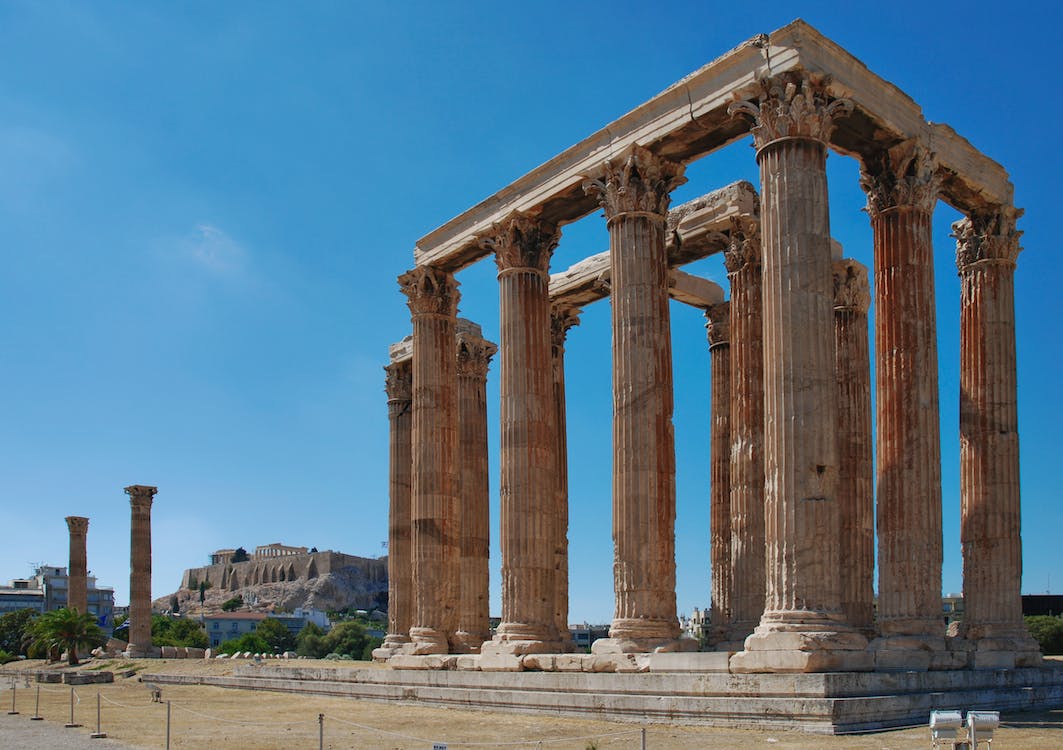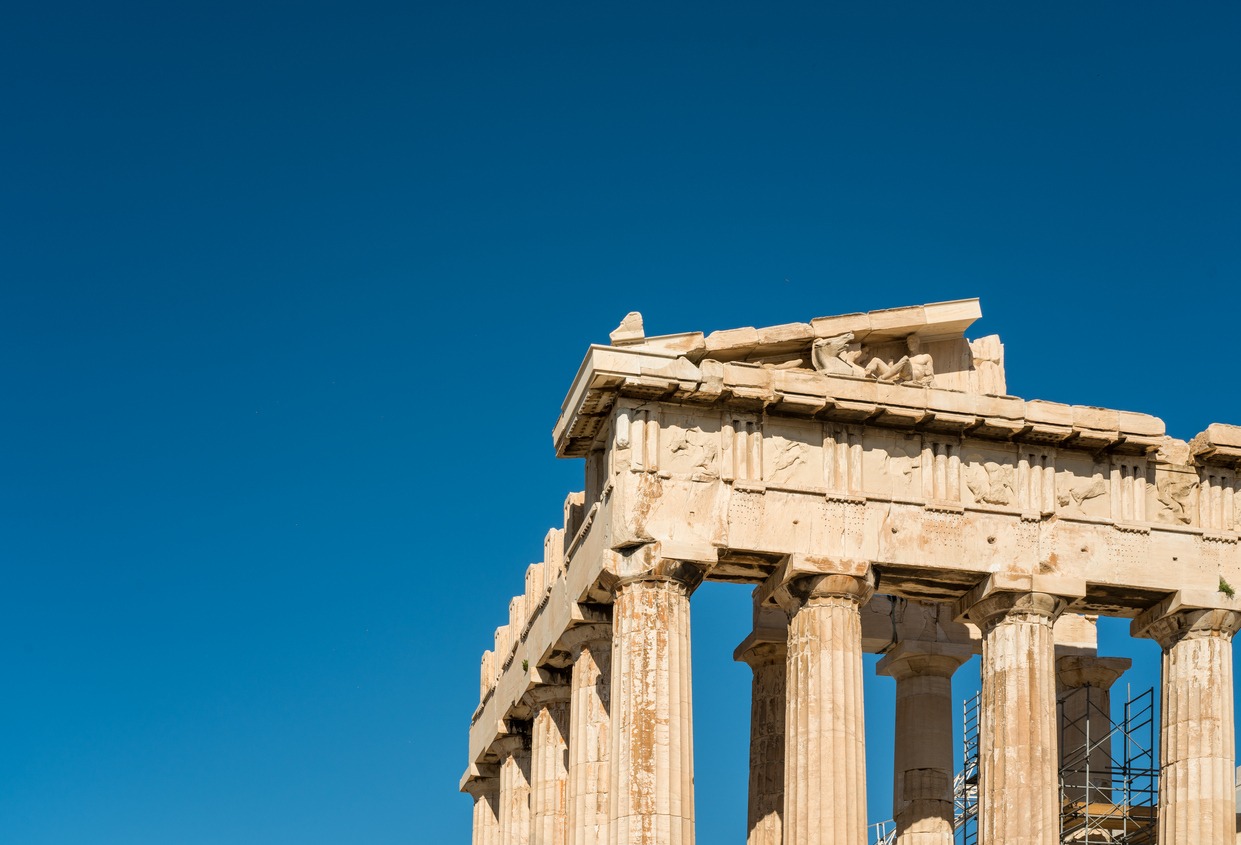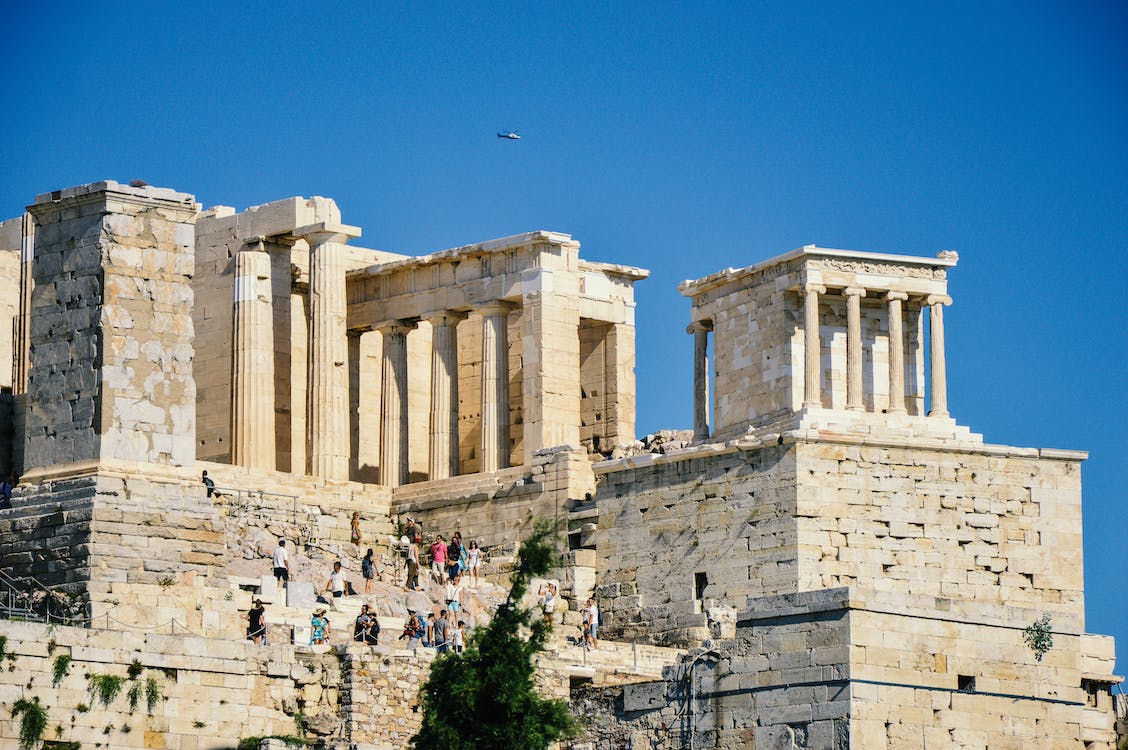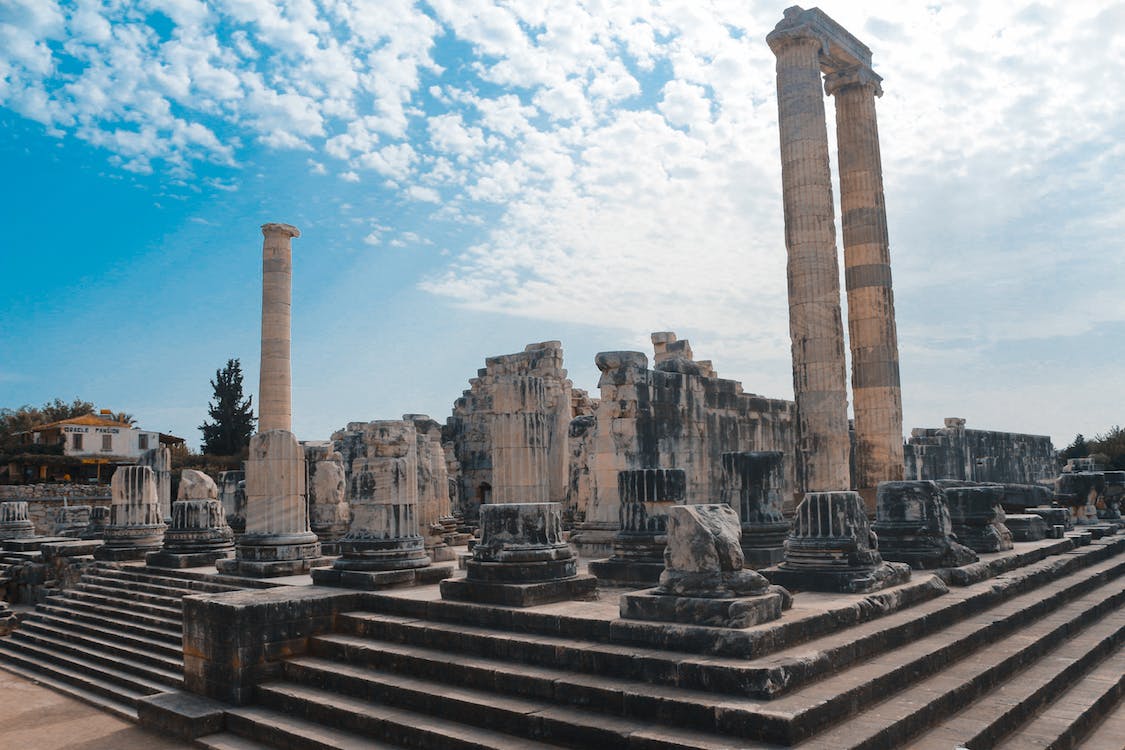The Doric order, one of the earliest and simplest of the classical orders defined in ancient Greek architecture, has long fascinated historians, architects, and archeologists alike. Characterized by sturdy fluted columns and plain, saucer-shaped capitals, the Doric order embodies a form of structural beauty and simplicity that has stood the test of time. Integral to understanding the aesthetic and functional aspects of these ancient structures is an examination of the materials used in their construction. This blog post delves deep into the evolution of material choices in ancient Doric columns, particularly focusing on the transition from limestone to marble, and explores the implications of these choices on architecture, durability, and artistic expression.
Historical Context and Origins of the Doric Order
The Doric order, one of the three classical orders of ancient Greek architecture, traces its roots back to the Dorian tribes, who are believed to have settled in the Peloponnese and other parts of Greece towards the end of the Mycenaean period, around 1200 BCE. This architectural style emerged as a reflection of the Dorians’ practical needs and austere lifestyle, contrasting with the more elaborate and ornate designs of the preceding Mycenaean civilization. The earliest Doric temples, dating from the 7th century BCE, were characterized by their simplicity, robustness, and harmony of proportions, principles that would define Greek architectural aesthetics for centuries to come.
Brief History of the Doric Order and Its Characteristics
The Doric order is most easily identified by its columns, which are shorter and more stout than those of the later Ionic and Corinthian orders. These columns typically stand directly on the stylobate (the uppermost step of the temple base) without a base, and their capitals are simple, rounded forms topped by a square abacus. The entablature they support is divided into three main parts: the architrave, frieze, and cornice, with the frieze often featuring alternating triglyphs (vertical grooves) and metopes (plain or sculpted panels). This architectural style favored the use of horizontal lines and a strong sense of proportion and symmetry, reflecting a harmonious balance between human creation and the natural world.
In addition to learning about the Evolution of Columns, learn about the Timeless Elegance of the Classical Period. Visit Exploring the Timeless Elegance of Classical Period Architecture.
Learn about the Renaissance Revival and Italianate Architecture in New York City. Visit Unveiling the Distinct Charm of Renaissance Revival vs. Italianate Architecture in New York City.
Explore the Charm of Colonial Architecture in New York. Visit Exploring the Charm of Colonial New York – A Guide to the City’s Historic Architecture.
Early Use of Limestone in Doric Architecture
In its early stages, Doric architecture primarily utilized limestone, a material readily available in many regions of Greece. Limestone was favored for its relative ease of carving and its adequacy for the structural demands of the period’s buildings. It allowed for the construction of sturdy, if not particularly tall, columns and lent itself well to the relatively simple geometric forms characteristic of early Doric design. However, limestone’s porosity made it susceptible to weathering and erosion, especially in regions with harsh climatic conditions. Over time, this vulnerability led to the deterioration of many limestone structures, prompting architects to seek more durable materials that could withstand the elements while still fulfilling the aesthetic and structural requirements of Doric architecture.
Geographical and Cultural Factors Influencing Material Choice
The choice of building materials in ancient Greek architecture was significantly influenced by geographical and cultural factors. The availability of different types of stone varied greatly from one region to another, with some areas rich in high-quality limestone and others closer to sources of fine marble. This geographical diversity led to regional variations in architectural style and material use, reflecting the local environment and resources.
Culturally, the Greeks placed a high value on beauty, harmony, and perfection, ideals that were deeply embedded in their architecture. As Greek society evolved and became more sophisticated, so too did its architectural ambitions. The desire for more imposing and refined structures led to innovations in both design and materials. The shift from limestone to marble in Doric columns was not merely a practical decision but also a cultural one, indicative of a society striving to express its ideals through the medium of architecture, seeking materials that could better capture the beauty and durability of the natural world.
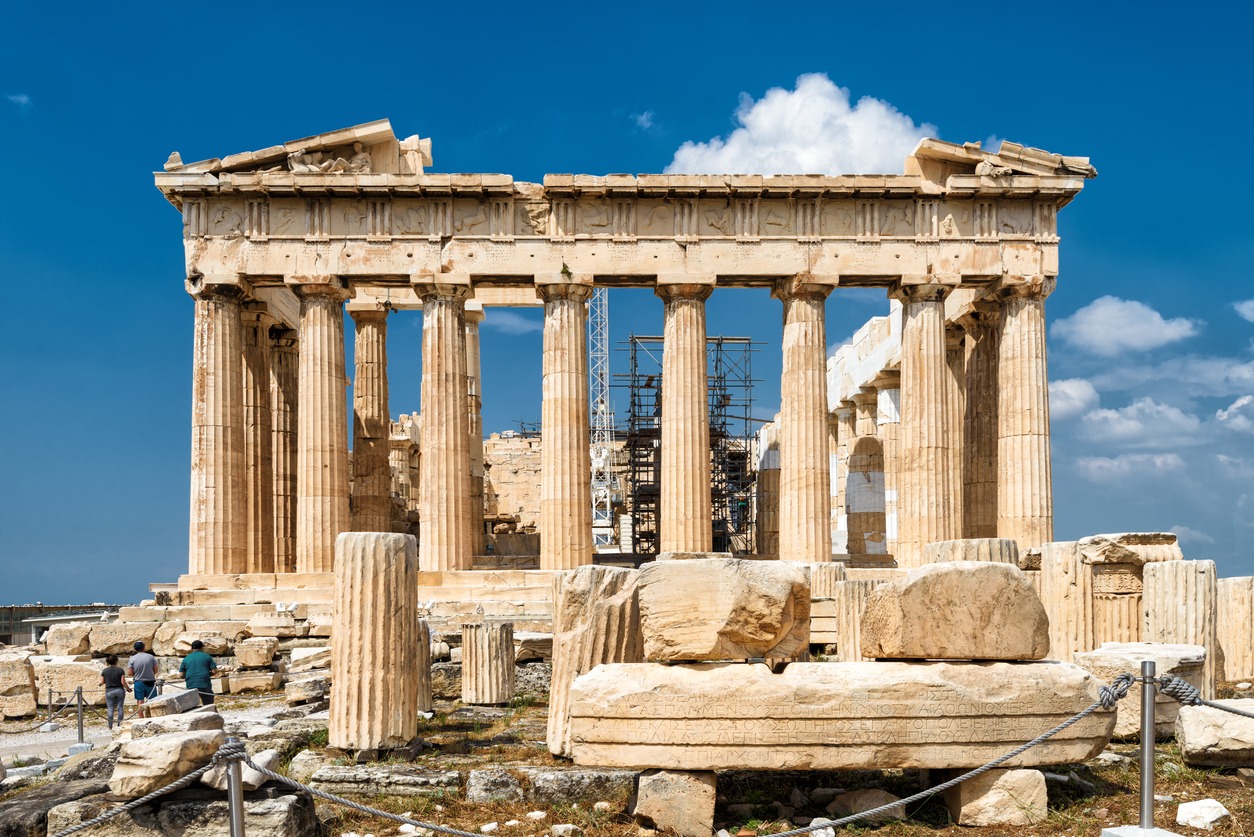
Limestone – The Foundation of Doric Columns
Limestone served as the foundational material in the early development of Doric architecture, largely due to its widespread availability and favorable working properties. This sedimentary rock, composed primarily of calcite and aragonite, which are different crystal forms of calcium carbonate, was abundant in many regions of ancient Greece, making it an accessible choice for the construction of temples, public buildings, and monuments.
Properties of Limestone
Limestone’s popularity as a building material in ancient times can be attributed to several key properties:
- Workability: Limestone is relatively soft and easy to carve when compared to harder stones like marble. This made it an ideal material for the early Greek architects and masons, who relied on simple tools and techniques to shape and erect their structures.
- Versatility: The natural color variations of limestone, ranging from white to beige and even shades of gray, provided aesthetic options for builders. Additionally, limestone could be finished in various textures, from smooth polished surfaces to more rustic, rough-hewn looks.
- Thermal Properties: Limestone has good thermal resistance, which helped in maintaining a moderate temperature inside the structures, a significant advantage in the Mediterranean climate of Greece.
Abundance in Ancient Greece
The geographical landscape of Greece, with its mountainous terrain interspersed with valleys and plains, is rich in sedimentary rock formations, including extensive deposits of limestone. This abundance meant that limestone was not only readily available but also relatively inexpensive as a building material, an important consideration in the construction of the large-scale temples and public buildings characteristic of ancient Greek cities.
In regions like the Peloponnese, Attica, and parts of the Aegean islands, limestone quarries were established close to major architectural sites, reducing the transportation challenges associated with large stone blocks. The proximity of these quarries to construction sites allowed for a more efficient building process and encouraged the use of limestone in the early stages of Doric architectural development.
The widespread use of limestone set the stage for the architectural achievements of ancient Greece, providing a solid foundation upon which the aesthetic and structural principles of Doric architecture could be explored and refined. It was the initial material of choice that enabled the early Greek architects to develop the techniques and design principles that would later be applied to more challenging materials like marble, leading to the architectural wonders that continue to captivate the world today.
Architectural examples using limestone – Strengths and Challenges
Early Doric architecture, with its preference for limestone, is exemplified in structures such as the Temple of Apollo at Corinth and the Temple of Hera at Olympia. These structures highlight the material’s strengths, particularly its workability and local availability, which allowed for the construction of monumental buildings relatively early in Greek architectural history.
Strengths:
- Workability: Limestone’s relatively soft composition made it easier for ancient craftsmen to carve and shape, facilitating the creation of the distinct fluted columns and detailed capitals characteristic of Doric architecture. This ease of working allowed for a relatively quick construction process, even with the limited tools available at the time.
- Local Availability: The proximity of limestone quarries to construction sites reduced transportation costs and logistical challenges, making large-scale constructions more feasible. This accessibility supported the widespread adoption of the Doric order across different regions of Greece.
Challenges:
- Weathering and Erosion: Limestone’s porosity made it vulnerable to weathering, particularly in regions with high rainfall or freeze-thaw conditions. Over time, this could lead to a loss of detail in the architectural elements and a general deterioration of the structural integrity of the buildings.
- Variability in Quality: The quality of limestone can vary significantly depending on the quarry source, with some variations being more susceptible to damage and wear than others. This inconsistency posed challenges for builders seeking to ensure the longevity of their structures.
Impact of limestone’s limitations on the durability and aesthetics of Doric columns
The limitations of limestone had significant implications for both the durability and aesthetics of Doric columns and the structures they supported:
- Durability Issues: The susceptibility of limestone to weathering and erosion meant that many early Doric structures required frequent repairs or did not survive to the present day in their original form. This vulnerability limited the lifespan of limestone buildings and necessitated the use of more durable materials, such as marble, in later constructions.
- Aesthetic Degradation: The erosion of limestone over time could blur the sharp lines and detailed carvings that were key elements of Doric design, diminishing the aesthetic impact of these structures. The fluting on the columns, in particular, could become less defined, reducing the interplay of light and shadow that was a critical aspect of their visual appeal.
- Structural Compromises: In cases of significant erosion, the structural integrity of limestone columns could be compromised, leading to safety concerns and the potential for collapse. This risk was particularly acute in buildings that bore significant loads or were exposed to harsh environmental conditions.
In response to these challenges, Greek architects and builders began to explore the use of more durable materials, such as marble, which offered greater resistance to weathering and allowed for finer, more enduring artistic expression. This transition marked a significant evolution in Greek architecture, with marble Doric columns setting new standards for beauty, durability, and technical achievement.
The Transition to Marble – A Cultural and Technological Shift
The transition from limestone to marble in the construction of Doric columns represents a pivotal moment in ancient Greek architecture, reflecting broader cultural, aesthetic, and technological shifts. This change was driven by a complex interplay of factors, including the desire for more visually striking and enduring monuments, the advancement of quarrying and sculpting techniques, and a societal push towards greater artistic and architectural achievements.
Reasons for the Shift from Limestone to Marble
- Aesthetic Desires: The Greeks’ increasing fascination with beauty, proportion, and perfection in art and architecture led to the search for materials that could better achieve these ideals. Marble, with its fine grain and potential for a high polish, offered a more luminous and visually appealing finish than limestone, allowing for greater expression of detail and refinement in the architectural elements.
- Durability Concerns: The vulnerability of limestone to weathering and erosion prompted a search for more resilient materials. Marble, being denser and less porous than limestone, provided enhanced durability and resistance to environmental factors, ensuring the longevity of the structures.
- Technological Advancements: The period saw significant advancements in quarrying and stone-carving techniques, including the development of more effective tools and methods for extracting and working with harder stones like marble. These technological innovations made the use of marble more feasible and cost-effective.
Introduction of Marble in Doric Architecture – The Parthenon as a Case Study
The Parthenon, dedicated to Athena Parthenos on the Acropolis of Athens, stands as a testament to the successful integration of marble into Doric architecture. Constructed in the mid-5th century BCE during the Golden Age of Athens under the leadership of Pericles, the Parthenon replaced an earlier temple of Athena that was destroyed by the Persians. This magnificent structure was almost entirely built of Pentelic marble, sourced from the quarries of Mount Pentelicus, a material chosen for its pure white appearance and fine quality.
The use of marble allowed for a level of precision and detail previously unattainable with limestone, evident in the Parthenon’s intricate friezes, metopes, and pediments, as well as the slender, fluted columns that exemplify the Doric order’s elegance. The Parthenon’s construction not only marked a high point in Athenian democracy and culture but also set a new standard for architectural excellence, influencing countless structures in the ancient world and beyond.
The Role of Marble Quarries in Ancient Greece, Especially Pentelic Marble
The quarries of Mount Pentelicus, located northeast of Athens, were of paramount importance in the shift towards marble in Greek architecture. Pentelic marble was prized for its pure white color with subtle veins of gray, making it highly sought after for both structural and sculptural use. The strategic location of these quarries near Athens facilitated the transportation of marble blocks to the Acropolis and other construction sites, contributing to the widespread adoption of marble in Athenian architecture.
The exploitation of marble quarries in ancient Greece was a complex and labor-intensive process, involving the cutting of large blocks from the mountain, their transportation to the construction site, and the subsequent carving and finishing of the stone. The development of advanced quarrying techniques, such as the use of iron wedges and levers, and the construction of roads and transportation systems, were critical to the efficient extraction and use of marble. This period of technological innovation not only enabled the architectural transition to marble but also reflected the broader cultural emphasis on progress, excellence, and the human capacity to shape the natural world according to artistic and architectural vision.
Examples of Marble Doric Columns in Ancient Greek Architecture
The use of marble in Doric columns is exemplified in some of the most renowned structures of ancient Greece:
- The Parthenon, Athens: Perhaps the most famous example, the Parthenon on the Acropolis of Athens, showcases the exquisite use of Pentelic marble in its columns and sculptures. The Doric columns of the Parthenon exemplify the harmony and balance sought in Greek architecture, their fluted shafts and simple capitals reflecting the ideals of strength, clarity, and beauty.
- The Temple of Hephaestus, Athens: Also known as the Hephaisteion, this temple near the Agora of Athens is another prominent example of Doric architecture utilizing marble. Although smaller than the Parthenon, the Temple of Hephaestus is one of the best-preserved ancient Greek temples, largely due to the durability of its marble construction.
- The Temple of Apollo, Delphi: The remains of this temple, famous for the Oracle of Delphi, feature marble elements that highlight the transition from limestone to marble in Greek architecture. The use of marble in such a significant cultural and religious center underscores the material’s importance in ancient Greek society.
These examples underscore the transformative impact of marble on Doric architecture, not only in terms of aesthetics and durability but also in the expression of cultural and religious values. The enduring beauty and strength of these structures continue to captivate and inspire, serving as a testament to the ancient Greeks’ architectural innovation and their pursuit of perfection in art and architecture.
The Legacy of Material Choices in Doric Architecture
The evolution of material choices in Doric architecture, particularly the transition from limestone to marble, has left an indelible mark on the history of architecture. This shift not only transformed the aesthetic and structural qualities of Greek temples and public buildings but also set a precedent for future generations of architects, influencing building practices in cultures around the world.
The Lasting Impact of the Transition from Limestone to Marble on Greek Architecture and Beyond
The adoption of marble in Doric architecture represented a significant advancement in the ancient Greeks’ quest for durability, beauty, and perfection. This transition can be seen as a reflection of the broader cultural and philosophical ideals of ancient Greece, emphasizing harmony, proportion, and the pursuit of excellence. The enduring nature of marble has allowed many of these architectural masterpieces to survive, providing a direct link to the past and a tangible representation of ancient Greek civilization’s achievements.
Moreover, the use of marble set a standard that would influence Roman architecture and the Renaissance, among other periods, highlighting the importance of material choice in achieving both aesthetic beauty and structural integrity. The Roman adaptation of Greek Doric columns, for example, demonstrated the lasting influence of Greek architectural principles, further disseminated throughout the empire and integrated into the architectural vocabulary of Western civilization.
The Influence of Material Choice on the Preservation and Understanding of Ancient Structures
The durability of marble has played a crucial role in the preservation of ancient structures, allowing future generations to study and appreciate the architectural innovations of the Greeks. Unlike buildings constructed with more perishable materials, many marble structures have withstood the ravages of time, weather, and human activity, providing archeologists, historians, and architects with invaluable insights into ancient construction techniques, design principles, and cultural values.
This preservation has also contributed to our understanding of the sociopolitical and religious context of ancient Greece, as temples and public buildings often served as expressions of civic pride, religious devotion, and community identity. The material legacy of these structures, therefore, offers a window into the ancient world, informing contemporary scholarship and public appreciation of classical antiquity.
Reflections on How Ancient Innovations in Material Use Continue to Inform Modern Architectural Practices
The ancient Greeks’ thoughtful approach to material selection, characterized by a keen understanding of the inherent properties of limestone and marble, continues to resonate in modern architectural practices. Today’s architects still grapple with similar considerations, balancing aesthetic goals with structural requirements, environmental sustainability, and the availability of materials.
The emphasis on durability, beauty, and the appropriate use of materials in ancient Greek architecture has inspired modern movements such as Neoclassicism, which seeks to revive classical principles and aesthetics. Moreover, the ancient practice of selecting materials that harmonize with the surrounding environment and local culture is mirrored in contemporary sustainable architecture, which prioritizes the use of locally sourced, environmentally friendly materials.
Conclusion
The evolution of material choices in ancient Doric columns from limestone to marble is a testament to the ingenuity and artistic vision of ancient Greek architects and builders. This transition not only enhanced the structural and aesthetic qualities of their constructions but also laid the groundwork for future architectural innovations. Today, the remnants of these ancient marvels continue to inspire and awe, serving as enduring symbols of the blend of functionality, artistry, and innovation that defined ancient Greek architecture. The legacy of Doric columns, carved from the earth itself, stands as a monumental tribute to human creativity and the relentless pursuit of beauty and perfection.

